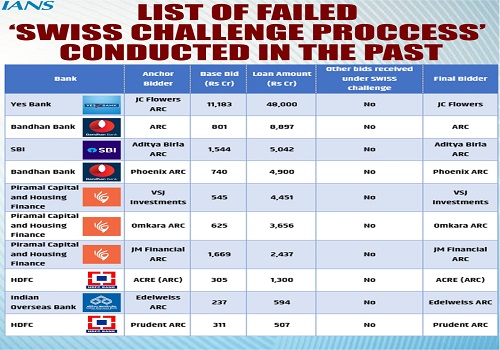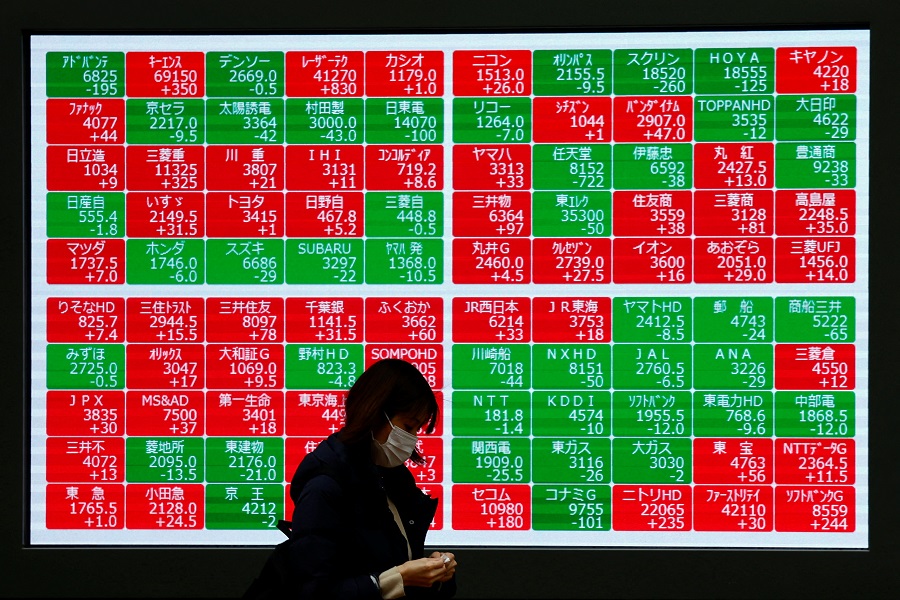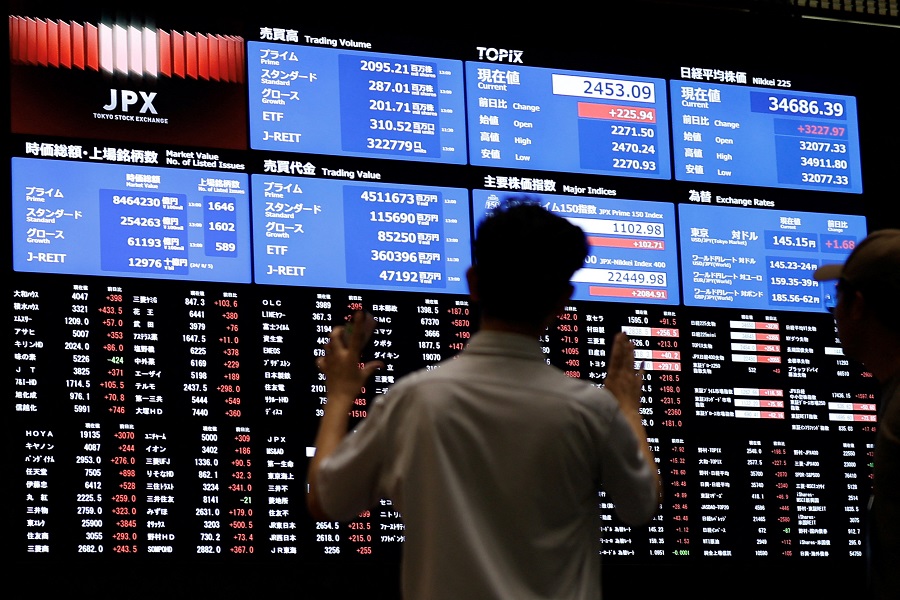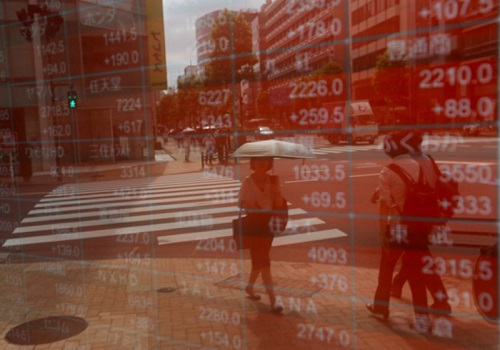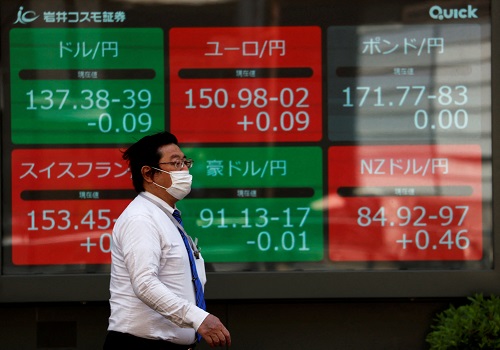Asia shares up on China data, await clutch of central bank meetings
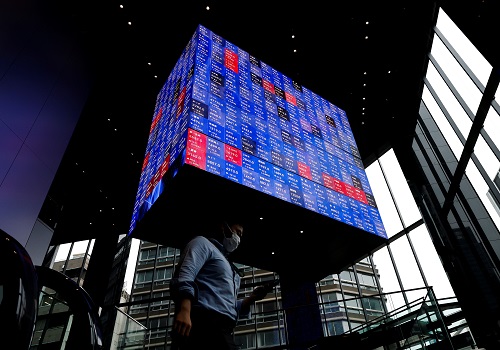
Follow us Now on Telegram ! Get daily 10 - 12 important updates on Business, Finance and Investment. Join our Telegram Channel
Asian shares firmed on Monday as Chinese data surprised on the upside for once, while investors looked to navigate a minefield of central bank meetings this week that could see the end of free money in Japan and a slower glide path for U.S. rate cuts.
Beijing reported industrial output climbed an annual 7% over January and February, while retail sales rose 5.5% on a year earlier. But real estate remained a worry as property investment fell 9% on the year, underlining the case for further policy support.
Central banks in the United States, Japan, UK, Switzerland, Norway, Australia, Indonesia, Taiwan, Turkey, Brazil and Mexico all meet this week and, while many are expected to hold steady, there is plenty of scope for surprises.
Tuesday could see the end of an era as the Bank of Japan is now widely tipped to end eight years of negative interest rates and cease or amend its yield curve control policy.
The Nikkei newspaper on Saturday became just the latest media outlet to flag the move, after major companies granted the biggest pay hikes in 33 years.
There is a chance the BOJ might wait for its April meeting given it will be issuing updated economic forecasts then.
"Whether or not it is March or April, we suspect the language accompanying any such move will carry a cautious tone, emphasising it more as a monetary policy adjustment rather than a tightening at this stage," said Carl Ang, a fixed income analyst at MFS Investment Management.
"For Japan a measured and gradual path of policy normalisation appears appropriate for an economy unaccustomed to higher rates and thus the policy messaging will be critical."
Markets also assume the BOJ will hike at a snail's pace and have a rate of 0.27% priced in by December, compared with the current -0.1%.
The central bank on Monday said it would conduct an unscheduled operation to buy bonds, presumably to head off any significant rise in yields and avoid market volatility.
That might be one reason the yen actually lost ground last week, with the dollar up at 149.20 yen. The euro stood at $1.0886, having eased 0.5% last week and away from a top of $1.0963.
Japan's Nikkei bounced 2.0%, having shed 2.4% last week as a run up to record highs drew some profit taking.
MSCI's broadest index of Asia-Pacific shares outside Japan gained 0.1%, after dipping 0.7% last week. Chinese blue chips firmed 0.4%.
EUROSTOXX 50 futures and FTSE futures were little changed. S&P 500 futures added 0.1% and Nasdaq futures 0.2%, with tension building ahead of the Federal Reserve policy meeting in Tuesday and Wednesday.
COUNTING THE DOTS
The Fed is considered certain to keep rates at 5.25-5.5%, but there is a possibility it might signal a higher for longer outlook on policy given the stickiness of inflation at both a consumer and producer level.
"We now expect 3 cuts in 2024, vs 4 previously, mainly because of the slightly higher inflation path," said Goldman Sachs economist Jan Hatzius in a note.
He still expects the Fed will start in June, assuming inflation eases again as expected, and officials will stick with their dot plot forecasts of three cuts this year.
"The main risk is that FOMC participants might instead be more concerned about the recent inflation data and less convinced that inflation will resume its earlier soft trend," Hatzius cautioned. "In that case, they might bump up their 2024 core PCE inflation forecast to 2.5% and show a 2-cut median."
The Fed is also expected to begin formal discussion of slowing the pace of its bond sales this week, perhaps halving it to $30 billion a month.
Bonds could do with the support given the damage done by a run of uncomfortably high inflation readings. Two-year Treasury yields are up at 4.73%, having climbed 24 basis points last week, while 10-year yields stood at 4.301%. [US/]
The probability of a rate cut as early as June has dropped to 55%, from 75% a week earlier, and the market has only 72 basis points of easing priced in for 2024 compared to more than 140 basis points a month ago.
The Bank of England meets on Thursday and is expected to keep rates at 5.25% as wage growth cools, while markets see some chance the Swiss National Bank might ease this week.
The ascent in the dollar and yields took some shine off gold, which was idling at $2,153 an ounce, having fallen 1% last week and away from all-time highs. [GOL/]
Oil prices have had a better run after the International Energy Agency raised its view on 2024 oil demand, while the supply outlook was clouded by Ukrainian strikes on Russian oil refineries. [O/R]
Brent added 22 cents to $85.56 a barrel, while U.S. crude rose 25 cents to $81.29 per barrel. [O/R]












 320-x-100_uti_gold.jpg" alt="Advertisement">
320-x-100_uti_gold.jpg" alt="Advertisement">


